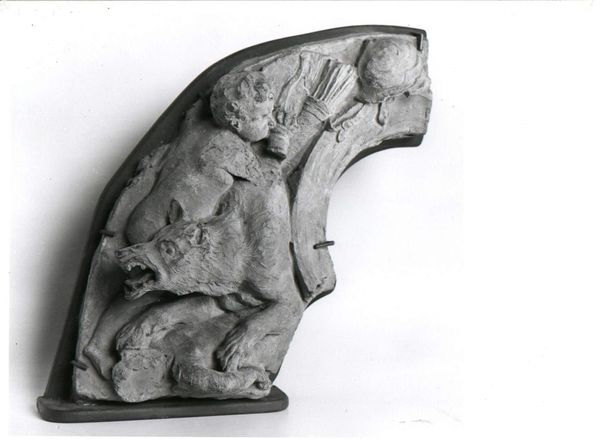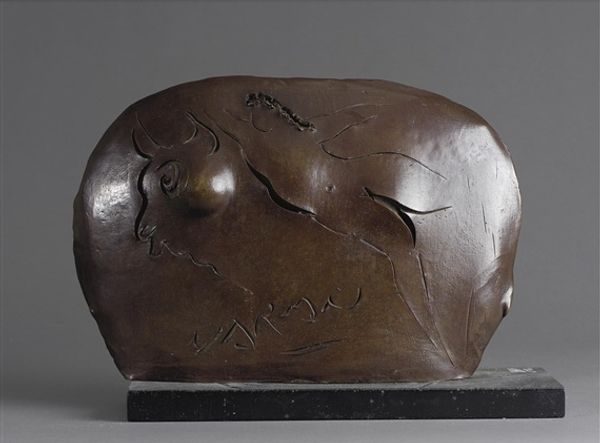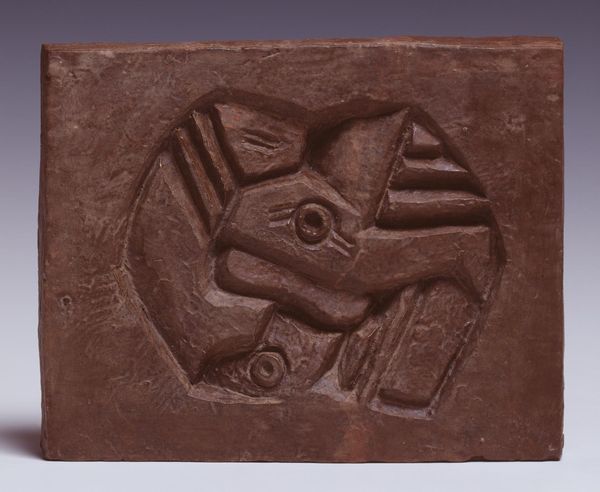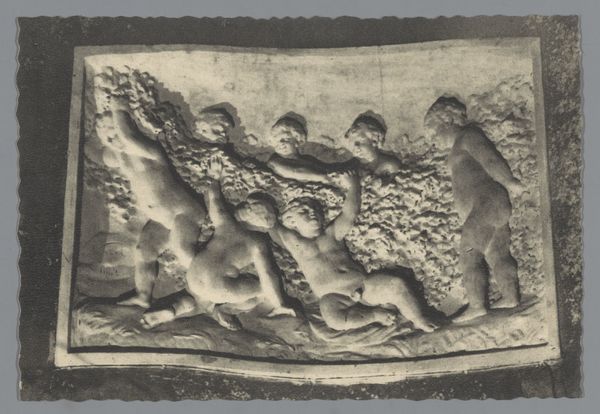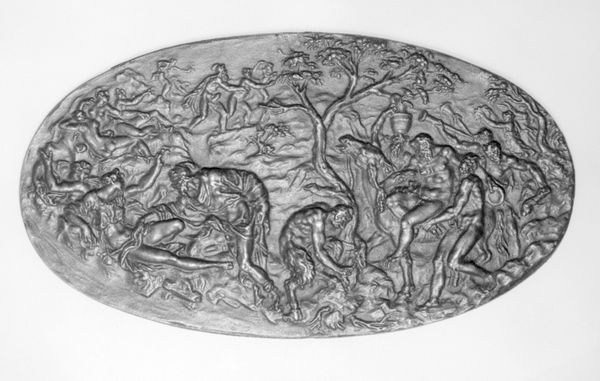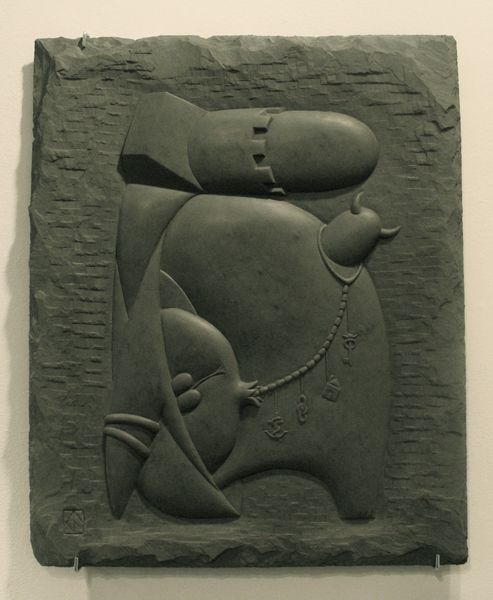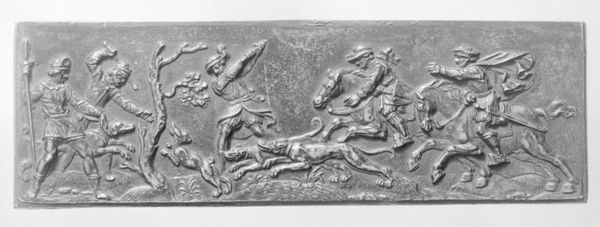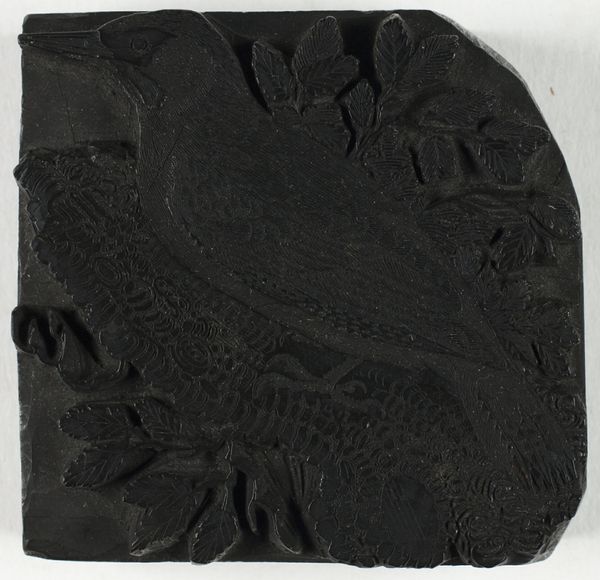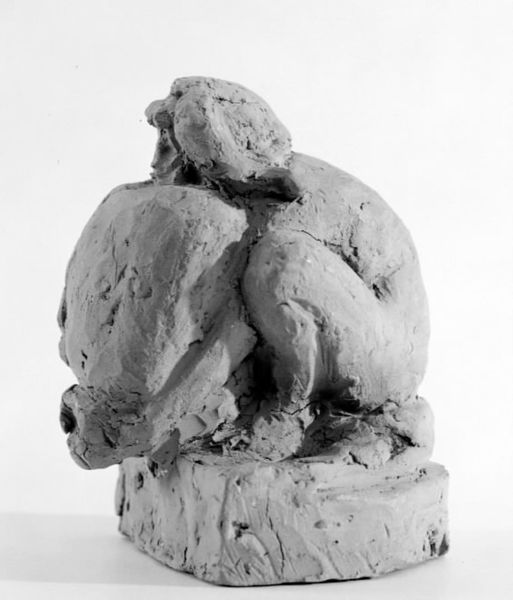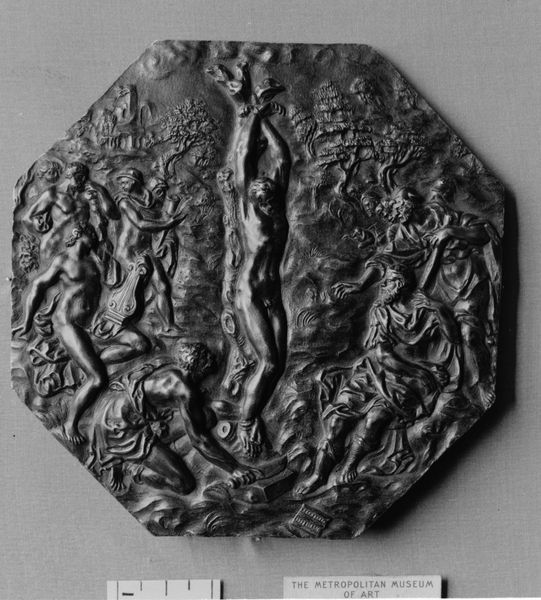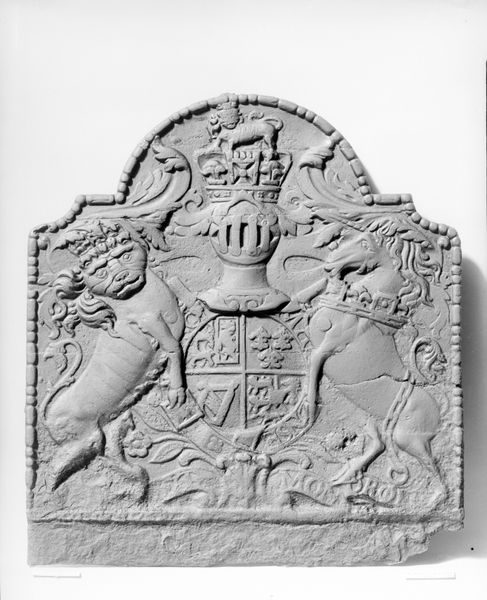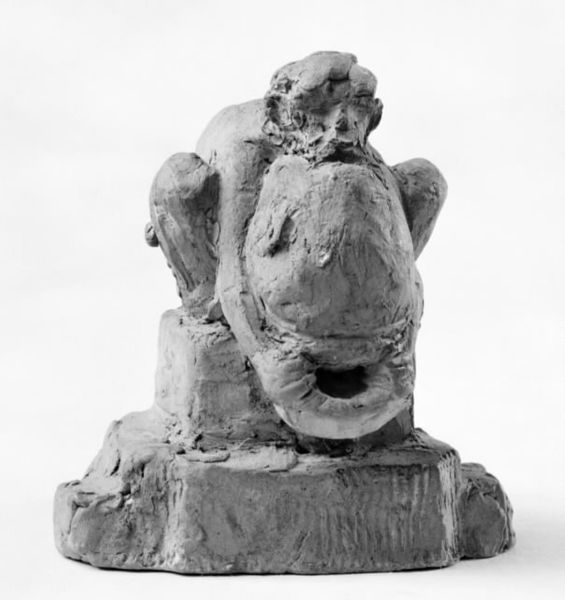
Model for an Overdoor Lunette with Putti and Fish for the Amsterdam Town Hall (now Royal Palace) at Dam Square c. 1650 - 1651
0:00
0:00
relief, sculpture, marble
#
baroque
#
stone
#
sculpture
#
relief
#
figuration
#
sculpture
#
history-painting
#
academic-art
#
marble
Dimensions: height 41.5 cm, width 40 cm, height 40.3 cm, width 40 cm
Copyright: Rijks Museum: Open Domain
Curator: Look at this fascinating relief! This is a model by Artus Quellinus, from about 1650 or '51. It's a study for an overdoor lunette—a semicircular sculpture—intended for the Amsterdam Town Hall. The Rijksmuseum holds it now, but can you imagine seeing it above a doorway? Editor: My first impression is... playful! Those cherubic figures make it look less like a solemn declaration of civic virtue and more like something from a Roman bathhouse! Curator: The playfulness is deceptive, I think. Note how the composition divides: on one side, a plump putto, seemingly falling amid some fruit, countered by another astride a fish. The Baroque is all about dramatic contrast. Editor: Absolutely! And look at that dynamic tension in the curved lines of the lunette! The artist definitely uses that semi-circle to draw the eye across the entire composition. Beyond the formal, it just strikes me as rather opulent. So many cherubs were in style back then! Curator: Well, opulent maybe, but each element held symbolic weight within the Town Hall’s decorations. Think about the fish, symbols of abundance—particularly apt for a trading city such as Amsterdam. There's always the argument if these sculptures held classical allegory too! Editor: True, allegory was everywhere! It’s interesting to consider what isn't shown here. What other imagery were they considering? Also, how does its scale dictate the viewer's experience when installed above a doorway? All interesting to contemplate. Curator: Exactly! That’s the joy of studying preparatory models. It provides a small intimate lens through which one gains new context of the larger final project! Editor: Right, getting a glimpse into the artistic process itself. You almost feel like you’re intruding on the artist's thoughts. It enlivens the viewing experience and enhances my perspective of Baroque artistry overall.
Comments
No comments
Be the first to comment and join the conversation on the ultimate creative platform.
